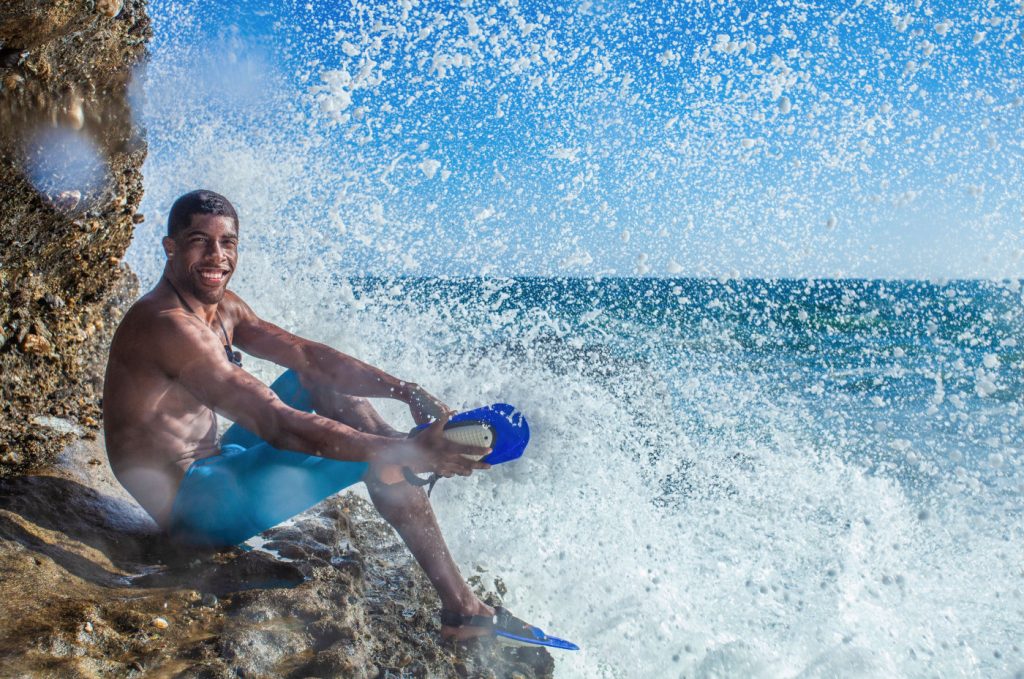Jamal Hill: Pushing the Limits with CMT

Column by Young Lee
Jamal Hill likes to keep a busy schedule. After all, he’s hoping to qualify for the 2020 Paralympic Games in Tokyo. And although he’s currently the No. 1 ranked U.S. Men’s Paralympic swimmer in the 100-meter freestyle, he isn’t yet guaranteed a spot in the Paralympics.
I reached out to Hill last week because I wanted to learn a bit more about the Paralympics and because he’s an athlete with Charcot-Marie-Tooth (CMT), the same disease that affects my family and me. During our phone conversation, I couldn’t help but think that his almost infectious “can-do attitude” was representative of the philosophy that seems to drive much of Hill’s life.
“As a kid, [CMT] never really manifested in me. The genes were there, but they lay dormant during the first few years of my life,” Hill said during a recent webinar sponsored by the Hereditary Neuropathy Foundation.
On Thanksgiving Day when Hill was about 10 years old, all that changed. The right side of his body went limp. Within a few hours, he was paralyzed, only able to speak and nod. Doctors attributed this to a CMT flare-up.
Although Hill eventually regained his mobility, his parents and other members of his family decided to keep quiet about the details of the disease. They didn’t want to alter his perceptions of what was within his reach.
“[My parents] acknowledged CMT, but they didn’t allow it to be an excuse,” Hill said. “They didn’t allow me to use CMT as an excuse or a crutch.”
And he certainly didn’t. Hill continued to work hard in order to push the limits in a sport he came to love — swimming — with the goal of making it to the Olympics.
In 2018, his coach, Wilma Wong, had some tough words for him.
She was observing Hill and said the way he moved reminded her of some of her students with multiple sclerosis. And that’s when she told him that unless someone finds a cure for CMT before the 2020 Olympics, Hill may want to consider the Paralympics.
“All the things I thought I was, was now in question,” Hill said. “Nobody ever wants to feel like there’s something wrong within themselves. All this time I was able to pretend that nothing [was] wrong and now [it was like a] mirror was held up to me that made me realize that I may not be able to compete at the level that I wanted to compete, because I don’t have use of certain faculties. And that brought forth a lot of questions for me.”
Hill said it was an emotional journey for him with many tears and a lot of prayers. But he said he’s a swimmer through and through, and he never considered quitting. Over time, Hill came to appreciate the opportunity the Paralympics presents as well as learning more about CMT and himself.
“[This experience] allowed me to challenge some of the preconceived notions I had,” he said. “It’s making me realize that there’s nothing to be ashamed of — the Paralympics are not at any less level than the Olympics. The athletes don’t train any less than other athletes — we are just as dedicated, just as driven. We are just as emotionally and mentally strong.”
What I find incredibly compelling about Hill’s story is his emotional journey. I have no idea what it’s like to be a world-class athlete, but I can relate to trying to find the willingness to accept the reality of CMT. You have to accept that the limitations exist while not letting those limitations define you.
Hill likes to phrase it differently.
“Even within a limit, we can still be limitless,” he said. “When we confront the things that challenge us, we find the opportunities to grow.”
It’s been about a year and a half since Hill really started thinking about his CMT, and now he hopes to become more involved in the CMT community. He plans to attend and speak at the Movement is Medicine Summit sponsored by the Hereditary Neuropathy Foundation. And he has a short documentary that will premiere on his social media on July 13.
***
Note: Charcot-Marie-Tooth News is strictly a news and information website about the disease. It does not provide medical advice, diagnosis, or treatment. This content is not intended to be a substitute for professional medical advice, diagnosis, or treatment. Always seek the advice of your physician or other qualified health provider with any questions you may have regarding a medical condition. Never disregard professional medical advice or delay in seeking it because of something you have read on this website. The opinions expressed in this column are not those of Charcot-Marie-Tooth News or its parent company, Bionews Services, and are intended to spark discussion about issues pertaining to Charcot-Marie-Tooth.









Christine Wodke
I hope you will join Team CMT